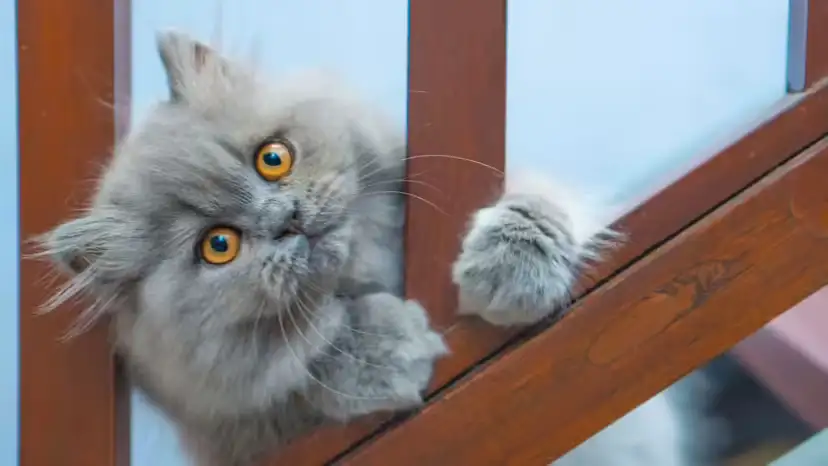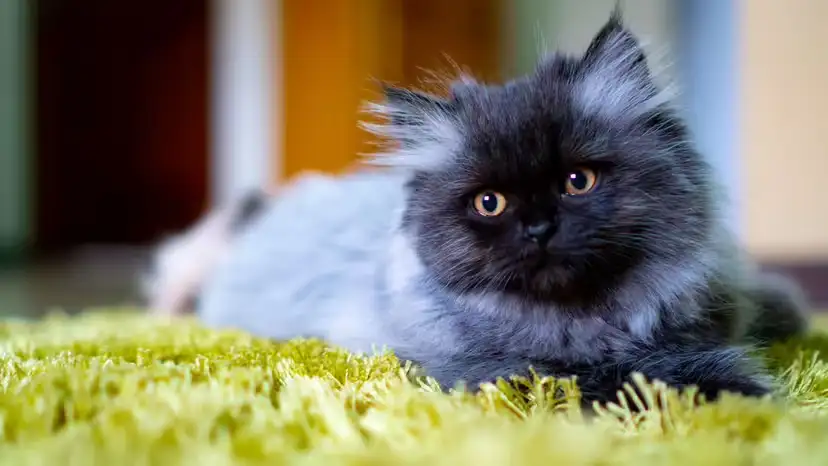With their long, silky coats, round expressive eyes, and famously gentle nature, Persian cats have secured their place as one of the most beloved cat breeds across the globe.
According to the Cat Fanciers’ Association (CFA), Persians consistently rank among the most registered purebred cats, admired for their calm temperament and luxurious appearance.

Below are nine in-depth, science-backed facts that reveal the true charm, history, and care needs of this elegant breed.
Although the name “Persian cat” suggests a direct link to Persia (modern-day Iran), the breed’s true origins remain partly mysterious.
Historical records indicate that European diplomats and travelers encountered long-haired cats in the Middle East during the 1600s and 1800s and brought them back to England and Western Europe.
Persian cats from Iran
Angora cats from the Ankara region in Turkey
Both varieties quickly gained popularity due to their exotic appearance and silky coats. However, the modern Persian we know today is the result of centuries of selective breeding in Europe and the United States—not solely from natural Middle Eastern lineages.
As animal shows grew popular in the 19th century, Persians became one of the first breeds to be officially recognized.
The first major cat show occurred in 1871 at the Crystal Palace in London, where Persians stunned the public with their beauty.
Arrived in the United States around 1875
Helped drive the early growth of cat fancy culture in both Europe and America
One of the first breeds with a recorded pedigree system
Persians remain a cornerstone breed in CFA and other global registries today.

The Persian’s long, dense coat is its most defining trait, with individual hairs measuring 4–6 inches (10–15 cm).
Exceptionally thick undercoat + long guard hairs
Available in hundreds of patterns and colors
Requires intentional grooming to prevent tangles
Selective breeding gave Persians their famous:
Flat, open facial structure
Small “button nose”
Large, round eyes set close together
Full, rounded cheeks and tiny mouth giving a “pansy face” appearance
Modern Persians have compact, cobby bodies, short legs, and medium-length fluffy tails.
Persian cats are adored not just for beauty but for their sweet, calm temperament.
Breeders often call them “dog-like cats” because:
They greet owners at the door
Some respond to their names
They enjoy following people from room to room
They use soft, melodic vocalizations to “chat” with their humans
Many sleep 18–20 hours a day
Kittens tend to be less playful than other breeds
They rarely jump onto counters or cause mischief
Their gentle personality makes them ideal indoor companions and perfect “lap royalty.”
The Persian coat does not maintain itself.
Owners must commit to daily grooming, especially under the armpits, behind the ears, and along the hind legs—areas where mats appear quickly.
Daily combing with a metal comb
Regular baths (many breeders begin bathing kittens early)
Occasional trimming around sanitary areas
Monitoring for tangles, debris, or oil buildup
Proper grooming reduces shedding and keeps the coat clean, soft, and healthy.

While many cats are known for intelligence, Persians tend to be slow developers.
Breeders commonly observe:
Some 8-week-old Persian kittens still learning how to use the litter box
Minimal hunting instinct (many choose to ignore mice entirely)
Slow reaction times due to their relaxed personality
They are not “dumb,” but rather calm, methodical, and uninterested in physical activity—traits reinforced by selective breeding for a docile indoor temperament.
CFA recognizes seven major divisions for Persians:
Solid
Silver & Golden
Smoke & Shaded
Tabby
Parti-color
Bi-color
Himalayan (colorpoint)
Within these divisions, breeders can produce:
White, black, blue, cream, red
Chocolate, lilac
Tortie, calico, tabby, shaded, smoke, chinchilla
And countless combinations.
Some breeding pairs can produce over 30 possible color outcomes, making Persian litters delightfully unpredictable.
Unlike some purebred dogs, Persians have relatively few breed-specific health issues thanks to modern genetic screening.
Polycystic Kidney Disease (PKD): now largely controlled through DNA testing
Brachycephalic breathing issues in ultra-flat varieties (less common in standard Persians)
Most Persians live 15–18 years, and many reach their early 20s with good care.
They typically have small litters (2–6 kittens) due to their compact pelvic structure.
Purchasing a Persian kitten from a reputable breeder is a significant investment.
Pet-quality kittens: USD $900–$2,000
Breeding or show-quality: USD $1,500–$3,000+
High-quality breeders often include:
Spay/neuter
Microchipping
Vaccinations
CFA registration and pedigree documentation
But grooming tools, regular baths, and veterinary care add ongoing costs.
The Himalayan Persian—famous for its deep blue eyes and colorpoint pattern—originated from crossing Persians with Siamese cats.
Today, it’s recognized as a division within the Persian breed, and top show Himalayans must have vibrant, sapphire-blue eyes.
Yes. Their pedigree status, rarity, coat quality, and breeding difficulty make them one of the pricier cat breeds.
Calm, affectionate, quiet, and people-oriented. They love gentle companionship and enjoy lounging near their owners.
Absolutely—provided you can commit to grooming. Their sweet temperament makes them excellent indoor family companions.
A high-quality, protein-rich diet including chicken, turkey, fish, and specialized indoor-cat formulas.
They enjoy solitude but should not be left unattended for long periods. In general, 24–48 hours is the upper limit, depending on age and health.
Persian cats are more than just beautiful—they are affectionate, loyal, and calm companions with a fascinating history and surprisingly diverse genetic background.
Though low-energy, they require high-maintenance grooming, making them ideal for owners who enjoy caring for a quiet, indoor-oriented, long-haired breed.
Their luxurious looks may capture attention, but their serene, loving personality is what truly makes them royalty among domestic cats.
animal tags: persian cats
We created this article in conjunction with AI technology, then made sure it was fact-checked and edited by a Animals Top editor.